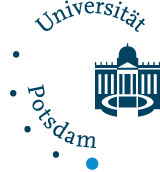What is DynaTrait?
DynaTrait is a Priority Program of the German Research Foundation (Deutsche Forschungsgemeinschaft: DFG) entitled: “Flexibility Matters: Interplay between Trait Diversity and Ecological Dynamics Using Aquatic Communities as Model Systems (DynaTrait)” (SPP 1704). In DynaTrait, over 60 researchers work together in 13 subprojects on different focal subjects. The Priority Program runs since 2015 and entered a second funding period (2018-2020).
What does DynaTrait stand for?
DynaTrait stands for dynamic traits, that is, functional traits of species which are measured at the individual level and scale up to influence ecosystem functioning at ecosystem level. The dynamics of food webs strongly depend on such functional traits of its involved organisms. These traits change over time in dependence of other organisms in the food web, which form relationships with each other.
The animated video below illustrates how these mutually adaptive dynamics work in functionally diverse communities.
This short video explains what's at the heart of Priority Program DynaTrait: how do organisms adapt to environmental change through functional biodiversity?
How do we investigate functional biodiversity and ecological dynamics?
In DynaTrait, we use plankton communities as model systems because plankton is relatively accessible to sample from natural communities as well as to maintain under laboratory conditions. Among other empirical datasets, we use the unique long-term dataset of the plankton community in Lake Constance for model development and validation.
As an example, we show here a video of a simulated predator-prey relationship which allows for the continuous adaptation of the prey's edibility and the predator's selectivity in dependence of each other. The second video below illustrates the seasonal plankton succession in Lake Constance.
Video of adaptive predator-dynamics
Mutual adjustment in the trait composition of prey and predator communities. Top: The mean (dashed or dotted lines) of the trait distributions (solid lines) of the prey (green) and predator (blue) communities is changing in response to selection. The prey species differ in their edibility and growth rates whereas the predators differ in their prey selectivity and half-saturation constant. Bottom: Biomass dynamics of prey (green) and predator (blue) communities.
Reference: Coutinho R., Klauschies T and U Gaedke (2016). Bimodal trait distributions with large variances question the reliability of trait-based aggregate models. Theoretical Ecology, 9: 389-408. Link
Video of the seasonal plankton succession in Lake Constance
The video shows an animation of the seasonal plankton succession in large and deep Lake Constance (dt.: Bodensee). Plankton biomass and the factors regulating growth exhibit strong seasonality. The Lake Constance data set comprises long-term, high-frequency time series up to 20 years of abiotic conditions (e.g. light, temperature, mixing intensity, nutrient concentrations), species biomasses, production, and the energy and nutrient flows within the food web. The annually repeated, successional cycle in Lake Constance is largely driven by autogenic processes during the growing season from March until November.
Reference: Boit A, and U Gaedke (2014). Benchmarking Successional Progress in a Quantitative Food Web. PLoS ONE (2014), 9(2): e90404. doi:10.1371/journal.pone.0090404. Link
